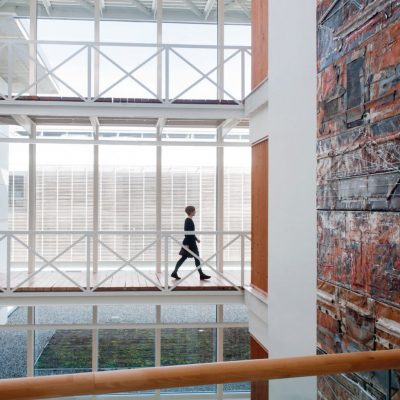
5 JULY 2024, VITORIA-GASTEIZ | Micaela Portilla building, UPV/EHU
20th International LASLAB Symposium
ENGLISH-MEDIUM INSTRUCTION IN MULTILINGUAL UNIVERSITIES
EMI (English-medium instruction) has widely spread during the last two decades in universities all over the world. In this symposium EMI experts from different European contexts will present theoretical frameworks, practical implications and recommendations to be implemented in the classroom. The symposium is aimed at university teachers, university students and researchers, but it also intends to cater for all those interested in foreign language acquisition, as the issues dealt with should be applicable to any L2. The symposium will be held entirely in English.
Who Helps Us




Programme
(Friday, July 5, 2024)
8:30-8:55 – Registration
8:55-9:00 – Opening
9:00-9:45 – Kristina Hultgren (The Open University)
Tracing the drivers of English as a medium of instruction in European higher education: Why does it matter?
9:45-10:30 – Tom Morton (Universidad Autónoma de Madrid)
Using Legitimation Code Theory to expand the knowledge base for EMI teachers
10:30-11:15 – Noelia Ruiz-Madrid & Inmaculada Fortanet-Gómez (Universitat Jaume I)
Multimodal pedagogies for EMI: New contexts and new responses
11:15-11:45 – Coffee Break
11:45-12:30 – Heath Rose (University of Oxford)
Global Englishes perspectives within English medium instruction: Moving towards global EMI
12:30-13:15 – Teresa Morell (Universidad de Alicante)
Classroom engagement in EMI teacher training
13:15-14:00 – Jim McKinley (University College London)
Integrating content and language in university education: The role and challenges of EMI content teachers
14:00-14:10 – Concluding remarks
Plenary Speakers
KRISTINA HULTGREN
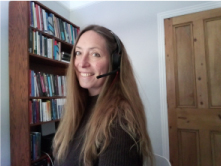
BIO
(Anna) Kristina Hultgren is Professor of Sociolinguistics and Applied Linguistics and UKRI Future Leaders Fellow at The Open University in the United Kingdom. She holds a DPhil in Sociolinguistics (Oxford, 2009), an MA in English and French Language (Copenhagen, 1999) and a Certificate in Public Policy Analysis (London School of Economics and Political Science, 2021). Kristina is Principal Investigator of ELEMENTAL, a large, interdisciplinary project funded with £1.4 million under a UKRI Future Leaders Fellowship. The project applies theories and methodologies from Political Science to trace governance and decision making processes that may indirectly lead to the rise of English as a medium of instruction in European higher education. Kristina is also Principal Investigator of EMEGEN, a British Council-funded project exploring the link between gender equality and English as a Medium of Education in low and middle-income countries.
Tracing the drivers of English as a Medium of Instruction in European Higher Education: Why does it matter?
The impact of English as a Medium of Instruction (EMI) on teacher practice has been much discussed (Lasagabaster & Doiz 2021) but questions remain over the extent to which their challenges and needs are recognized at top-level. This talk makes a case for identifying and engaging with key decision makers in academic governance in order to ensure that EMI is implemented in ways that support a smooth implementation.
To identify those individuals, we trace the rise of EMI back to a series of governance reforms that have swept across Europe since the 1980s and radically reconfigured the ways in which the higher education sector is run (Broucker et al. 2019). Presenting findings from an ongoing collaborative, interdisciplinary project ELEMENTAL (English as the Language-of-Education Mechanisms in Europe: New Transdisciplinary Approaches in Linguistics), we argue that EMI is a (perhaps inevitable yet unforeseen) outcome of ‘steering at a distance’ reforms premised on a neoliberal philosophy to loosen state control, implement a more corporate and target-driven style of governance and make universities key players in a ‘global knowledge economy’.
Adopting theoretical and methodological frameworks from Political Science, Public Administration and Higher Education Studies, ELEMENTAL retheorizes the rise of EMI as an outcome of ‘steering at a distance’ reforms and empirically tests this hypothesis in a number of higher education systems across European nation states. Our findings confirm our general hypothesis that those countries that have accorded their higher education institutions greater autonomy also have a higher number of EMI programmes; however, there is significant variation across European systems in the ways in which this happens (Hultgren & Wilkinson 2022; Hultgren et al. 2023; Nao et al. 2023; Thomas et al. under review; Wingrove et al. under review; Yuksel et al. under review; Zuaro et al. under review).
References
· Broucker, Bruno, Liudvika Leišytė, Kurt De Wit & Jef C. Verhoeven. 2019. Understanding higher education system reform: Practices, patterns and pathways. In Bruno Broucker, Kurt De Wit, Jef C. Verhoeven and Liudvika Leišytė (eds) Higher education system reform: An international comparison after twenty years of Bologna (pp. 221-238). Brill Sense.
· Hultgren, Anna Kristina, Marion Nao, Peter Wingrove, Dogan Yuksel & Beatrice Zuaro. 2023. New insights into the trend towards English as a medium of instruction in European higher education through transdisciplinary participation. Yearbook of the Finnish Association for Applied Linguistics 2023: 318 – 331. AFinLAn vuosikirja 2023 (Suomen soveltavan kielitieteen yhdistyksen julkaisuja 80) | AFinLA Yearbook (journal.fi).
· Hultgren, Anna Kristina & Robert Wilkinson. 2022. New understandings of the rise of English as a medium of instruction in higher education: the role of key performance indicators and institutional profiling. International Journal of the Sociology of Language 2022 (277): 47–59.
· Lasagabaster, David & Aintzane Doiz. 2021. (Eds) Language use in English-medium instruction at university: International perspectives on teacher practice. Routledge.
· Nao, Marion, Peter Wingrove, Dogan Yuksel, Beatrice Zuaro, Anna Kristina Hultgren. 2023. University autonomy and the increasing shift to English in academic programmes at European universities: In dialogue with Liviu Matei. Sociolinguistica, 37(2): 1-12.
· Thomas, Nathan et al. (under review)
· Wingrove, Peter, Beatrice Zuaro, Dogan Yuksel, Marion Nao, Levy Littvay & Anna Kristina Hultgren (under review)
· Yuksel, Dogan, Peter Wingrove, Marion Nao, Beatrice Zuaro & Anna Kristina Hultgren (under review)
· Zuaro, Beatrice, Dogan Yuksel, Marion Nao, Peter Wingrove & Anna Kristina Hultgren (under review)
TOM MORTON

BIO
Tom Morton is permanent lecturer (professor permanente laboral) in the Department of English Philology, Universidad Autónoma de Madrid, where he is a member of the UAM-CLIL Research Group. His research focuses mainly on classroom discourse and teacher knowledge and identity in CLIL, EMI and TESOL. He is co-author of The Roles of Language in CLIL (Cambridge University Press, 2012), Applied Linguistics Perspectives on CLIL (John Benjamins, 2017) and Social Interaction and English Language Teacher Identity (Edinburgh University Press, 2018), and has published widely on CLIL, EMI and TESOL topics in leading applied linguistics and language education journals. He has participated in many funded research projects and was recently principal investigator on a project which used Legitimation Code Theory (LCT) to investigate university EMI lecturers’ knowledge-building practices.
Using Legitimation Code Theory to expand the knowledge base for professional learning in EMI
Recent EMI (English-medium instruction) research has turned attention to the serious challenges facing content lecturers, and their training and continuing professional development (CPD) needs (Dang et al., 2023; Deignan & Morton, 2022; Lasagabaster, 2022). Overall, the picture is far from positive, as institutions often resist providing the resources for adequate staff training, there is a lack of a systematic approach to training and professional development, and there are yawning gaps in the research agenda (Curle et al. 2020; Lasagabaster, 2022; Morell & Volchenkova, 2021). There is a pressing need to identify the competencies underlying successful teaching in EMI, to find ways to integrate them into continuing professional development for lecturers, and to provide appropriate EMI teacher certification (Curle et al. 2020; Lasagabaster, 2022). However, some good news is that competence frameworks already exist, and they are beginning to advance understanding of what knowledge and abilities EMI lecturers need (Curle et al., 2020; Dang & Vu, 2020). In this paper, I propose that the sociological framework of Legitimation Code Theory (LCT), as developed by Maton (2014), can make a unique contribution to expanding these frameworks and provide a stronger conceptual base for the design and implementation of training and CPD for EMI lecturers. LCT provides conceptual and empirical tools for uncovering the organizing principles or “codes” which generate different knowledge practices. I will argue that existing frameworks for EMI lecturers’ competences could be strengthened with a stronger focus on disciplinary knowledge-building practices. Doing so would meet content lecturers halfway by focusing on what is of most concern to them, rather than beginning with linguistic or communicative concerns (Airey, 2020). I illustrate how LCT can be incorporated into conceptual frameworks and practices of EMI training and CPD, with examples from empirical studies, and propose a reconceptualization of existing frameworks for EMI lecturers’ competences.
References
· Airey, J. (2020). The content lecturer and English-medium instruction (EMI): Epilogue to the special issue on EMI in higher education. International Journal of Bilingual Education and Bilingualism, 23(3), 340-346.
· Curle, S., Jablonkai, R. R., Mittelmeier, J., Sahan, K., Veitch, A., & Galloway, N. (2020). English in higher education–English medium. Part 1: Literature review. English in higher education–English medium. British Council.
· Dang, T. K. A., Bonar, G., & Yao, J. (2023). Professional learning for educators teaching in English-medium-instruction in higher education: A systematic review. Teaching in Higher Education, 28(4), 840-858.
· Dang, T. K. A., & Vu, T. T. P. (2020). English-medium instruction in the Australian higher education: untold stories of academics from non-native English-speaking backgrounds. Current Issues in Language Planning, 21(3), 279-300.
· Deignan, T., & Morton, T. (2022). The challenges of English medium instruction for subject lecturers: a shared viewpoint. ELT Journal, 76(2), 208-217.
· Lasagabaster, D. (2022). Teacher preparedness for English-medium instruction. Journal of English-Medium Instruction, 1(1), 48-64.
· Maton, K. (2014). Knowledge and knowers: Towards a realist sociology of education. Routledge.
· Morell, T., & Volchenkova, K. (2021). English medium instruction (EMI) teacher training in higher education. Revista Alicantina de Estudios Ingleses, (34), 7-13.
NOELIA RUIZ-MADRID
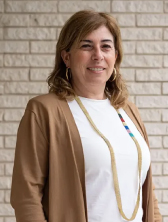
BIO
Dr. Mº Noelia Ruiz Madrid is Head of the Department and Senior lecturer in the Department of English Studies at Universitat Jaume I (Castellón, Spain), where she co-chairs the Group for Research on Academic and Professional English (GRAPE). She teaches both undergraduate and postgraduate courses in the areas of EAP, ESP, and EFL methodology. She has published in high-ranked journals and books. Her research interests are related to multimodal discourse analysis, CLIL, ICT, and language learning, and Content and Language Integrated Learning in Higher Education/EMI.
Multimodal pedagogies for EMI: new contexts and new responses
In contemporary educational landscapes, the integration of English as a Medium of Instruction (EMI) presents both opportunities and challenges for educators worldwide. (Lasagabaster, 2022). This presentation explores the intersection of multimodal pedagogy, EMI, digital genres, and emerging discourses, offering insights into navigating the complexities of new challenges for EMI. Multimodal pedagogy (Lim & Tan-Chia, 2023) is emerging as a transformative approach in EMI classrooms, with an emphasis on different modes of communication, including embodied, disembodied, and filmic (Bernad-Mechó & Valeiras-Jurado, 2023), inherent in digital genres used to teach or support disciplinary knowledge. By incorporating digital genres such as YouTube videos, Instagram reels, websites, and video curricula, among others, lecturers can support the learning of disciplinary knowledge and create dynamic learning environments that cater to the diverse pedagogical linguistic, and cultural backgrounds of students. This comprehensive approach not only enhances language and content learning, but also cultivates critical thinking, creativity, and the digital and multimodal disciplinary literacies essential for navigating the complexities of the 21st century (Kress, 2010; Jewitt, 2006). However, the implementation of multimodal pedagogy in EMI is not without its challenges. Lecturers need to learn how to make the most of these new communication and learning contexts, effectively combining the multimodal disciplinary affordances that digital genres represent and the pedagogical affordances they offer for each discipline (Airey, 2017; Ruiz-Madrid & Fortanet-Gómez, 2019). Moreover, the emergence of new discourses shaped by socio-cultural and digital transformations demands continuous adaptation and innovation in educational practices (Girón-García & Fortanet-Gómez, 2023).
The aim of this presentation is to analyse innovative strategies and best practices for meeting the evolving needs of learners in EMI classrooms. Drawing on theoretical frameworks and empirical research from the Group for Research on Academic and Professional English (GRAPE) at Universitat Jaume I, we offer practical insights into the use of multimodal pedagogy and digital genres to facilitate meaningful learning experiences amidst new challenges and discourses in the EMI classroom. By adopting an inclusive and adaptive approach, EMI lecturers can empower students to critically and constructively engage with emerging discourses and equip them with the skills needed to develop their multimodal disciplinary competence.
References
· Airey, J. (2017). Disciplinary Affordance vs Pedagogical Affordance: Teaching the Multimodal Discourse of University Science. Presented at the New Zealand Discourse Conference. Retrieved from https://urn.kb.se/resolve?urn=urn:nbn:se:uu:diva-335891
· Bernad-Mechó, E. & Valeiras-Jurado, J. (2023). Multimodal Engagement Strategies in Science Dissemination. Discourse Studies 25(6), 1-12. https://doi.org/10.1177/14614456231161755
· Girón-García, C. & Fortanet-Gómez, I. (2023). Science dissemination videos as multimodal supporting resources for ESP teaching in Higher Education. English for Specific Purposes, 70, 164-176. https://doi.org/10.1016/j.esp.2022.12.005
· Kress,G. (2010). Multimodality: A Social Semiotic Approach to Contemporary Communication. London: Routledge.
· Jewitt, C. (2006). Technology, literacy and learning: A multimodal approach. London: Routledge.
· Lasagabaster, D. (2022). English-Medium Instruction in Higher Education. Cambridge: Cambridge University Press.
· Lim, F. V., & Tan-Chia, L. (2023). Designing Learning for Multimodal Literacy: Teaching Viewing and Representing. London, New York: Routledge.
· Ruiz-Madrid, N. & Fortanet-Gómez, I. (2019) Using pedagogical affordances in order to unveil disciplinary discourse in Electrical Engineering for EMI teacher training. In A. Jiménez-Muñoz & A.-C. Lahuerta Martínez (eds.), Empirical Studies in Multilingualism. Analysing contexts and outcomes (pp. 203-229). Bern: Peter Lang.
INMACULADA FORTANET-GÓMEZ
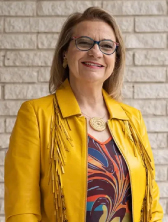
BIO
Dr. Inmaculada Fortanet-Gómez is a full professor in English Studies at Universitat Jaume I (Castellón, Spain), where she co-chairs the Group for Research on Academic and Professional English (GRAPE). She teaches EAP and ESP, as well as postgraduate courses on secondary education language pedagogies. She has more than 100 articles and chapters published in high-ranked journals and books. Her research interests are related to multimodal discourse analysis, CLIL, and Content and Language Integrated Learning in Higher Education.
Multimodal pedagogies for EMI: new contexts and new responses
In contemporary educational landscapes, the integration of English as a Medium of Instruction (EMI) presents both opportunities and challenges for educators worldwide. (Lasagabaster, 2022). This presentation explores the intersection of multimodal pedagogy, EMI, digital genres, and emerging discourses, offering insights into navigating the complexities of new challenges for EMI. Multimodal pedagogy (Lim & Tan-Chia, 2023) is emerging as a transformative approach in EMI classrooms, with an emphasis on different modes of communication, including embodied, disembodied, and filmic (Bernad-Mechó & Valeiras-Jurado, 2023), inherent in digital genres used to teach or support disciplinary knowledge. By incorporating digital genres such as YouTube videos, Instagram reels, websites, and video curricula, among others, lecturers can support the learning of disciplinary knowledge and create dynamic learning environments that cater to the diverse pedagogical linguistic, and cultural backgrounds of students. This comprehensive approach not only enhances language and content learning, but also cultivates critical thinking, creativity, and the digital and multimodal disciplinary literacies essential for navigating the complexities of the 21st century (Kress, 2010; Jewitt, 2006). However, the implementation of multimodal pedagogy in EMI is not without its challenges. Lecturers need to learn how to make the most of these new communication and learning contexts, effectively combining the multimodal disciplinary affordances that digital genres represent and the pedagogical affordances they offer for each discipline (Airey, 2017; Ruiz-Madrid & Fortanet-Gómez, 2019). Moreover, the emergence of new discourses shaped by socio-cultural and digital transformations demands continuous adaptation and innovation in educational practices (Girón-García & Fortanet-Gómez, 2023).
The aim of this presentation is to analyse innovative strategies and best practices for meeting the evolving needs of learners in EMI classrooms. Drawing on theoretical frameworks and empirical research from the Group for Research on Academic and Professional English (GRAPE) at Universitat Jaume I, we offer practical insights into the use of multimodal pedagogy and digital genres to facilitate meaningful learning experiences amidst new challenges and discourses in the EMI classroom. By adopting an inclusive and adaptive approach, EMI lecturers can empower students to critically and constructively engage with emerging discourses and equip them with the skills needed to develop their multimodal disciplinary competence.
References
· Airey, J. (2017). Disciplinary Affordance vs Pedagogical Affordance: Teaching the Multimodal Discourse of University Science. Presented at the New Zealand Discourse Conference. Retrieved from https://urn.kb.se/resolve?urn=urn:nbn:se:uu:diva-335891
· Bernad-Mechó, E. & Valeiras-Jurado, J. (2023). Multimodal Engagement Strategies in Science Dissemination. Discourse Studies 25(6), 1-12. https://doi.org/10.1177/14614456231161755
· Girón-García, C. & Fortanet-Gómez, I. (2023). Science dissemination videos as multimodal supporting resources for ESP teaching in Higher Education. English for Specific Purposes, 70, 164-176. https://doi.org/10.1016/j.esp.2022.12.005
· Kress,G. (2010). Multimodality: A Social Semiotic Approach to Contemporary Communication. London: Routledge.
· Jewitt, C. (2006). Technology, literacy and learning: A multimodal approach. London: Routledge.
· Lasagabaster, D. (2022). English-Medium Instruction in Higher Education. Cambridge: Cambridge University Press.
· Lim, F. V., & Tan-Chia, L. (2023). Designing Learning for Multimodal Literacy: Teaching Viewing and Representing. London, New York: Routledge.
· Ruiz-Madrid, N. & Fortanet-Gómez, I. (2019) Using pedagogical affordances in order to unveil disciplinary discourse in Electrical Engineering for EMI teacher training. In A. Jiménez-Muñoz & A.-C. Lahuerta Martínez (eds.), Empirical Studies in Multilingualism. Analysing contexts and outcomes (pp. 203-229). Bern: Peter Lang.
HEATH ROSE

BIO
Heath Rose is Professor of Applied Linguistics in the Department of Education at the University of Oxford. He is the co-ordinator of the EMI Oxford Research Group. Publications include a number of books on Global Englishes, including Introducing Global Englishes (Routledge) and Global Englishes for Language Teaching (Cambridge). He has also edited or authored several books on research methods, including the Routledge Handbook of Applied Linguistics (Routledge) and Data Collection Research Methods in Applied Linguistics (Bloomsbury). He is series co-editor of Cambridge Elements in Language Teaching.
Global Englishes perspectives within English Medium Instruction: Moving towards Global EMI
This presentation draws together perspectives from the research fields of Global Englishes and English Medium Instruction (EMI) to explore shared issues, critical perspectives, and future agendas at the crossroads of both fields. Growth in both areas of research has emerged from the reality of English being a dominant global language and academic lingua franca, however both fields of research simultaneously lobby to resist the uncritical adoption of perspectives framed by the Anglosphere into pedagogical practice and policy. Much of the Global Englishes agenda has aimed to dismantle native speaker hegemony, highlighting the vital roles of multilingual teachers and global language users. Such perspectives within higher education may help to ensure EMI is conducted effectively and ethically. Furthermore, the phenomenon of Global Englishes can be used to undergird movements to resist centre-periphery views of English, which have positioned the English-speaking world as a centre of reference in EMI in many contexts. A critical Global Englishes perspective of EMI may be used to enact a shift of power from the Anglosphere to the peripheral majority to encourage local sources of knowledge be drawn upon when seeking solutions to local challenges. The paper concludes with calls for more critical research into EMI, which could be informed by further exploration of research at the crossroads of Global Englishes and EMI.
TERESA MORELL
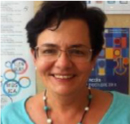
BIO
Teresa Morell has a PhD in Applied Linguistics and is currently an honorific member of the English Department at the University of Alicante (UA), where she taught in the English Studies degree and in the Master of Spanish and English as L2/FL. She has held many workshops to train university professors to present at international conferences and to teach field specific subjects in English in universities of Spain, the U.S. and Cuba. She is a founder of Prof-teaching, the English-medium instruction (EMI) university teacher training program at the UA. Among her most recent publications are: “Prof-Teaching: an English-medium instruction professional development program with a digital, linguistic and pedagogical approach” (ILLT, 2022) and “A multimodal analysis of pair work engagement episodes: Implications for EMI lecturer training (JEAP, 2022).
Classroom engagement in EMI teacher training
Effective teaching involves knowing ’what’ and ‘how’ to communicate. Most university teachers are experts in ‘what’ they teach but, unfortunately in many cases, have not been taught ‘how’ to teach. For this reason, EMI teacher training should include not only how to promote interactive classroom discourse, but also how to create engagement episodes (EEs), i.e, “instances within the interactive lecture in which students are involved in pair work, group work, debates, games or web-based activities”(Morell et al., 2020, p. 309).
In Morell et al., 2022, it was found that the EEs of 12 EMI trainees’ videorecorded micro-teaching sessions each consisted of the following five moves: 1. Contextualizing, 2. Setting up, 3. Monitoring, 4. Eliciting, and 5. Summarizing. These moves constitute the “Pair work engagement episodes framework” that has been useful to train EMI teachers, enrolled in the Prof-teaching EMI professional development program at the University of Alicante, to create their own EEs.
In this talk, we will watch and analyze a videorecorded pair work engagement episode to identify the pedagogical functions and the semiotic resources (i.e., spoken, written, non-verbal materials and body language modes) this particular EMI lecturer instantiates. We will focus on how the lecturer orchestrates modes to contextualize the activity, set it up, monitor the students, elicit students’ responses, and finally to summarize and reinforce what has been learned through the EE. It is hoped that by the end of the talk, attendees will be convinced of the benefits of becoming more aware of how to create the moves and pedagogical functions of EEs, especially for EMI teacher training.
References
· Gay, F., Bewick, F., & French, T. (2020). From EFL to EMI trainer: Some reflections. Modern English Teacher, 29(1), 72–76.
· Kress, G., Jewitt, C., Ogborn, J., & Tsatsarelis, C. (2001). Multimodal teaching and learning. The rhetorics of the Science classroom. Bloomsbury.
· Lasagabaster, D. and Doiz; A. (Ed.) (2021). Language Use in English-Medium Instruction at University: International Perspectives on Teacher Practice. Routledge.
· Lim, F. V. (2021). Designing learning with embodied teaching. Perspectives from multimodality. Routledge.
· Llinares, A., & Mendikoetxea, A. (2020). Enhancing interactional competence in EMI: Teacher reflective practices. In M. del M. Sánchez-Pérez (Ed.), Teacher training for English-medium instruction in higher education (pp. 87–105). IGI Global.
· Morell, T., Norte, N., & Beltrán-Palanques, V. (2020). How do trained English-medium instruction (EMI) lecturers combine multimodal ensembles to engage their students? In R. Roig-Vila (Ed.), La docencia en la enseñanza superior nuevas aportaciones desde la investigación e innovación educativas (pp. 308–321). Octaedro.
· Morell, T., Beltrán-Palanques, V., & Norte, N. (2022). A multimodal analysis of pair work engagement episodes: Implications for EMI lecturer training. Journal of English for Academic Purposes, 58, 1-19. https://doi.org/10.1016/j.jeap.2022.101124
· Querol-Julián, M. (2023). Multimodal interaction in English-medium instruction: How does a lecturer promote and enhance students’ participation in a live online lecture? Journal of English for Academic Purposes, 6. https://doi.org/10.1016/j.jeap.2022.101207
· Suviniitty, J. (2012). Lectures in English as a lingua franca: Interactional features. Doctoral thesis. University of Helsinki.
JIM MCKINLEY

BIO
Dr. Jim McKinley, SFHEA, is Professor of Applied Linguistics at University College London. He has taught in higher education in the UK, Japan, Australia, and Uganda, as well as US schools. His research targets implications of globalization for L2 writing, language education, and higher education studies. Jim is co-author and co-editor of several books on research methods in applied linguistics, as well as English Medium Instruction Practices in Higher Education (Bloomsbury, 2022). He is an Editor-in-Chief of the journal System, and a co-Editor of the Cambridge Elements series Language Teaching (Cambridge University Press).
Integrating Content and Language in University Education: The Role and Challenges of EMI Content Teachers
The increasing integration of content and language in internationalized higher education holds particular significance for content teachers who must now teach in English. In many contexts, this shift has led to the implementation of EMI (English-medium instruction) policy to take the form of CLIL (content and language integrated learning) models. In this talk, I delve into the theoretical foundations and evolution of CLIL and EMI, specifically tailored to the context of internationalized university education. I will address the challenge of defining the range of methodologies, given the diversity of models and practices across and within educational settings. The discussion extends to the linguistic challenges faced by both learners and educators in EMI and highlights the critical role of university content teachers in navigating these challenges. Furthermore, I will evaluate the effectiveness of EMI and CLIL in achieving the dual objectives of language proficiency and subject knowledge acquisition. I will examine the sociolinguistic implications of these educational models, including the impact on native language usage in the classroom, educational equity, the risk of domain loss in the native language, and the phenomenon of self-colonization, offering insights into the complex dynamics at play for university subject teachers engaged in CLIL and EMI.
About Us
The Language and Speech Laboratory is a multidisciplinary research group based in the University of the Basque Country which investigates issues concerning speech and language acquisition.
Staff
Aintzane Doiz Bienzobas
David Lasagabaster
Pilar García Mayo
Amaia Aguirregoitia
Agurtzane Azkarai Garai
Irene Balza Tardaguila
María Tania Barberán Recalde
María Basterrechea Lozano
Ada Bier
Asier Calzada
Martin Cooke
María Luisa García Lecumberri
Esther Gómez Lacabex
Junkal Gutierrez Mangado
Marta Kopinska
Almudena Mallo Dorado
María Martínez Adrián
Ruth Milla Melero
María Orcasitas Vicandi
Yolanda Ruiz de Zarobe
PhD Students
Ane Alonso
Irene Alonso Arruabarrena
Sara Chamosa Rabadán
Kebir Colmenero
Paloma Delgado Garza
Kevin Iglesias Diéguez
Zuzana Nadova
María Nieva Marroquín
Research Assistants
Marina Galdeano
Ana García Mendiola
María Sierro
Travel and Venue
The conference will take place in:
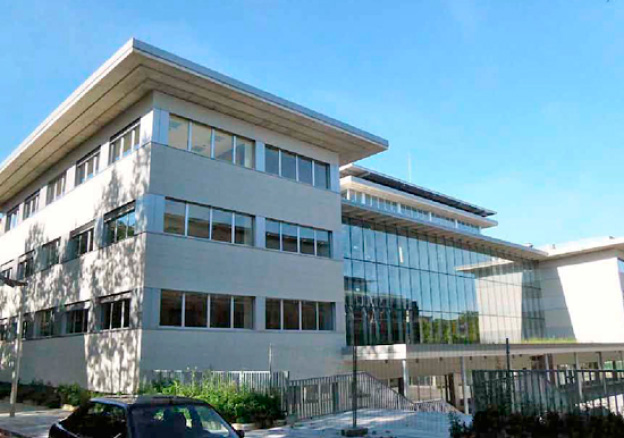
Salón de Grados
Edificio Micaela Portilla eraikina
Justo Vélez de Elorriaga Kalea, 1, Campus de Álava
01006 Vitoria-Gasteiz (Spain)
laslab.ehu@gmail.com
+34 945 01 40 28
www.laslab.org
HOW TO GET TO VITORIA-GASTEIZ
BY PLANE
Vitoria International Airport (VIT) is very close to the city (less than 10 km), and it has flight connections with national and international cities, including Sevilla, Málaga, Alicante, Mallorca and Gran Canaria in Spain, as well as with Brussels/Charleroi (Belgium), Cologne-Bonn (Germany) and Milan-Bergamo (Italy). The main company operating from Vitoria is Ryanair.
Vitoria Airport is conveniently connected with the city centre by bus. Bus tickets can be purchased here.
Alternatively, Bilbao Airport (BIO) is about 1 hour away by public transport and it has many international connections. To reach Vitoria-Gasteiz from Bilbao airport, catch the bus from the one and only bus stop just outside the arrivals area. Remain on the bus until the final stop at Bilbao bus terminal (Intermodal). Buses run every 15-20 minutes and the journey takes about 20-25 minutes. At Bilbao bus terminal, take the bus to Vitoria-Gasteiz run by La Union bus line. The journey takes 45 min.
BY TRAIN
Vitoria-Gasteiz has direct train connections from Madrid (3h 10min) and Barcelona (5h).
BY BUS
Check the bus company ALSA for connections between Vitoria-Gasteiz and the main cities within Spain. This company offers journeys directly from the Madrid Airport (Barajas) to Vitoria (4h 30 min).
ABOUT VITORIA-GASTEIZ

Vitoria-Gasteiz is the capital of the province of Alava, in the Basque Country. In 2012, it was designated “European Green Capital” by the European Commission, thanks to its pioneering environmental policies. The city is surrounded by parks known as the “green belt”.
The city has a medieval centre, where countless places of great traditional character, such as the Plaza de la Virgen Blanca (White Virgin Square), and historic buildings like the cathedral of Santa María.
Vitoria-Gasteiz is also known for its lively culinary scene, with a range of restaurants, cafes, and food markets offering some of the best Basque dishes and pintxos.
The centre is relatively small and easy to get around on foot. The UPV/EHU campus is connected with the bus station by tram and bus, and the train station is right opposite the Faculty of Arts (2 min walk).
ACCOMODATION
Some of the accomodation options available in Vitoria-Gasteiz all of which are within short walking distance (12 minutes max.) of the conference venue.
Hotel Silken Ciudad de Vitoria (4*)
Walking distance to the conference venue: 12 minutes approx.
Standard room price per night: 80 € approx.
ABBA Jazz Hotel Vitoria (3*)
Walking distance to the conference venue: 8 minutes approx.
Standard room price per night: 60 € approx.
Hotel Dato (2*)
Walking distance to the conference venue: 5 minutes approx.
Standard room price per night: 65 € approx.
Hotel Arts (2*)
Walking distance to the conference venue: 12 minutes approx.
Standard room price per night: 55 € approx.
NH Canciller Ayala (4*)
Walking distance to the conference venue: 10 minutes approx.
Standard room price per night: 75 € approx.
Kora Green City (4* Aparthotel)
Walking distance to the conference venue: 8 minutes approx.
Standard room price per night: 65 € approx.
Hotel Nirea (2*)
Walking distance to the conference venue: 8 minutes approx.
Standard room price per night: 70 € approx.
Hotel Centro de Vitoria (2*)
Walking distance to the conference venue: 8 minutes approx.
Standard room price per night: 50 € approx.
Registration
Registration fee: 15€
(Coffee, fruit and pastries are included in the price)
Registration deadline: June 25, 2024
